 Contents Title Page Key to Symbols used Foreword by Parimarjan Negi Bibliography Introduction Summary of Recommendations Open Games 1 Early Deviations and Gambits The Portuguese Opening The Nakamura Variation The Ponziani Opening The Gring Gambit The Centre Game The Kings Gambit 2 Bishops Opening and Vienna Game The Bishops Opening The Vienna Game 3 Four Knights Introduction The Halloween Gambit 4.a3 4.d3 4.h3 4.Be2 The Italian Four Knights The Glek System 4 Four Knights 4.d4 and 4.Bb5 The Belgrade Gambit The Scotch Four Knights The Spanish Four Knights 5 Scotch Game On the Way to the Main Line The Main Line 6 Two Knights 4.d4 and 4.d3 The Original Morphy Attack The Improved Morphy Attack The Modern Variation Introduction 4.d3 Introduction and 5.Nc3: Main Lines after 5.00 00 7 Two Knights with 4.Ng5 The Kieseritzky Variation 8.Bb5 8.Qf3 8.Bd3! The Modern Trend Spanish 8 Exchange Variations The Exchange Variation, 5.Nc3 f6 The Simple 5.d4 The Main Line The Delayed Exchange Variation 5.d4 The Central Attack 9 On the Road to the Main Line Spasskys 5.Nc3 The Worrall System Just Before the Main Lines 10 The Trendy d2-d3 5.d3 The Fashionable 6.d3 Anands concept with 8.a3! 11 Breyer 10.d3 and Sidelines after 10.d4 10.d3 Nbd7 11.Nbd2 Bb7 12.Nf1 Nc5 13.Bc2 Re8 14.Ng3 Bf8 Introduction to 10.d4 12 Breyer Alternatives to 13.Nf1 13.b4 Bf8 14.a4 Nb6 15.a5 Nbd7 16.Bb2 Rb8 Introduction to 13.a4 The Super-Critical 20.b4! 13 Breyer Main Lines 14.Bg5 14.Ng3 g6 15.Bg5 15.b3 The Sophisticated 18.Bg5 15.a4 Index of Main Games Variation Index
Contents Title Page Key to Symbols used Foreword by Parimarjan Negi Bibliography Introduction Summary of Recommendations Open Games 1 Early Deviations and Gambits The Portuguese Opening The Nakamura Variation The Ponziani Opening The Gring Gambit The Centre Game The Kings Gambit 2 Bishops Opening and Vienna Game The Bishops Opening The Vienna Game 3 Four Knights Introduction The Halloween Gambit 4.a3 4.d3 4.h3 4.Be2 The Italian Four Knights The Glek System 4 Four Knights 4.d4 and 4.Bb5 The Belgrade Gambit The Scotch Four Knights The Spanish Four Knights 5 Scotch Game On the Way to the Main Line The Main Line 6 Two Knights 4.d4 and 4.d3 The Original Morphy Attack The Improved Morphy Attack The Modern Variation Introduction 4.d3 Introduction and 5.Nc3: Main Lines after 5.00 00 7 Two Knights with 4.Ng5 The Kieseritzky Variation 8.Bb5 8.Qf3 8.Bd3! The Modern Trend Spanish 8 Exchange Variations The Exchange Variation, 5.Nc3 f6 The Simple 5.d4 The Main Line The Delayed Exchange Variation 5.d4 The Central Attack 9 On the Road to the Main Line Spasskys 5.Nc3 The Worrall System Just Before the Main Lines 10 The Trendy d2-d3 5.d3 The Fashionable 6.d3 Anands concept with 8.a3! 11 Breyer 10.d3 and Sidelines after 10.d4 10.d3 Nbd7 11.Nbd2 Bb7 12.Nf1 Nc5 13.Bc2 Re8 14.Ng3 Bf8 Introduction to 10.d4 12 Breyer Alternatives to 13.Nf1 13.b4 Bf8 14.a4 Nb6 15.a5 Nbd7 16.Bb2 Rb8 Introduction to 13.a4 The Super-Critical 20.b4! 13 Breyer Main Lines 14.Bg5 14.Ng3 g6 15.Bg5 15.b3 The Sophisticated 18.Bg5 15.a4 Index of Main Games Variation Index  A Classical RepertoirePlaying 1.e4 e5 By Nikolaos Ntirlis Quality Chess http://www.qualitychess.co.uk First edition 2016 by Quality Chess UK Ltd Copyright 2016 Nikolaos Ntirlis All rights reserved. No part of this publication may be reproduced, stored in a retrieval system or transmitted in any form or by any means, electronic, electrostatic, magnetic tape, photocopying, recording or otherwise, without prior permission of the publisher. Paperback ISBN 978-1-78483-014-4 Hardcover ISBN 978-1-78483-015-1 All sales or enquiries should be directed to Quality Chess UK Ltd, Suite 247, Central Chambers, 11 Bothwell Street, Glasgow G2 6LY, United Kingdom Phone +44 141 204 2073 e-mail: info@qualitychess.co.uk website: www.qualitychess.co.uk Distributed in North America by National Book Network Distributed in Rest of the World by Quality Chess UK Ltd through Sunrise Handicrafts, ul. Poligonowa 35A, 20-817 Lublin, Poland Typeset by Jacob Aagaard Proofreading by Colin McNab, Danny McGowan and John Shaw Edited by Andrew Greet Cover design by adamsondesign.com Cover Photo by Capture365.com Key to symbols used White is slightly better Black is slightly better White is better Black is better + White has a decisive advantage + Black has a decisive advantage = equality with compensation with counterplay with an initiative unclear ? a weak move ?? a blunder ! a good move !! an excellent move !? a move worth considering ?! a move of doubtful value only move # mate Acknowledgements Id like to express my gratitude to: Sabino, Sune, Sam, John, Elshan, Ioannis and Sotiris, for sending me important feedback on various lines of the book. Jacob and George, for promoting my work and for their general support.
A Classical RepertoirePlaying 1.e4 e5 By Nikolaos Ntirlis Quality Chess http://www.qualitychess.co.uk First edition 2016 by Quality Chess UK Ltd Copyright 2016 Nikolaos Ntirlis All rights reserved. No part of this publication may be reproduced, stored in a retrieval system or transmitted in any form or by any means, electronic, electrostatic, magnetic tape, photocopying, recording or otherwise, without prior permission of the publisher. Paperback ISBN 978-1-78483-014-4 Hardcover ISBN 978-1-78483-015-1 All sales or enquiries should be directed to Quality Chess UK Ltd, Suite 247, Central Chambers, 11 Bothwell Street, Glasgow G2 6LY, United Kingdom Phone +44 141 204 2073 e-mail: info@qualitychess.co.uk website: www.qualitychess.co.uk Distributed in North America by National Book Network Distributed in Rest of the World by Quality Chess UK Ltd through Sunrise Handicrafts, ul. Poligonowa 35A, 20-817 Lublin, Poland Typeset by Jacob Aagaard Proofreading by Colin McNab, Danny McGowan and John Shaw Edited by Andrew Greet Cover design by adamsondesign.com Cover Photo by Capture365.com Key to symbols used White is slightly better Black is slightly better White is better Black is better + White has a decisive advantage + Black has a decisive advantage = equality with compensation with counterplay with an initiative unclear ? a weak move ?? a blunder ! a good move !! an excellent move !? a move worth considering ?! a move of doubtful value only move # mate Acknowledgements Id like to express my gratitude to: Sabino, Sune, Sam, John, Elshan, Ioannis and Sotiris, for sending me important feedback on various lines of the book. Jacob and George, for promoting my work and for their general support.  Foreword by Parimarjan Negi These days, the art of chess analysis is completely different from that of playing the game.
Foreword by Parimarjan Negi These days, the art of chess analysis is completely different from that of playing the game.  Foreword by Parimarjan Negi These days, the art of chess analysis is completely different from that of playing the game.
Foreword by Parimarjan Negi These days, the art of chess analysis is completely different from that of playing the game.
You have to be creative, diligent, and constantly guide the computer in the direction you want but often, you let the machine do the heavy lifting. This is in stark contrast to the practical skills possessed by tournament players indeed, it can often be detrimental to ones own game. Practical players therefore have to be wary about delving too deeply into the art of analysis, and a natural consequence is that their skills and understanding of engines will not be as refined as those of correspondence specialists. Nikos Ntirlis made his decision to be an analyst early. The first time I met Nikos was at the 2006 Greek Team Championship. I had just become a Grandmaster, while he was an enthusiastic member of the local club.
I had never focused too much on opening theory before then, and I was surprised to hear Nikos talk enthusiastically about the intricacies of deep Grnfeld lines that even I wasnt familiar with. Now, almost a decade later, Nikos has improved as a player, but its as an opening analyst where he has channelled his passion to produce outstanding results. Since he has clearly defined his priorities, he has extensively honed his art of finding and developing ideas using the engine. In this book, I was particularly impressed by Nikoss direct, dynamic ideas for Black against the various non-Spanish variations. Black players, and books, often give these lines generic, regurgitated treatment. Nikos, on the other hand, provides the ideal, principled solutions to Whites various options in the Open Games.
One example is the 4.Ng5 variation of the Two Knights Defence. The critical 9.h4! has been giving Black a lot of trouble lately, but Nikos analysed it extensively and came up with the almost unknown 9...Qc7!?, which leads to vibrant play for Black and might even shut this line down as a try for a White advantage. Against the Spanish, Nikos has wisely avoided any of the ultra-dynamic set-ups which can flutter in and out of fashion. Instead he advocates the classical Breyer, which has been tried and tested by numerous world champions and other leading players. The arising positions are hard to analyse, as engines tend to lose some of their effectiveness in closed structures. I have often used that to my advantage with White, winning many nice games by strangulating my opponents from positions that were supposedly close to 0.00.
Nikos, being Nikos, has done much more than present a bunch of lines with dry, superficial engine assessments. Instead he has looked more deeply, utilizing high-level correspondence games (including a few of his own) and sophisticated analytical tools to refine his ideas. The result is a bombproof repertoire which is solid enough never to be refuted, yet complex enough to offer plenty of winning chances. Parimarjan Negi Stanford, December 2015 BibliographyOpening Books Alterman: The Alterman Gambit Guide Black Gambits 2, Quality Chess 2012 Alterman: The Alterman Gambit Guide White Gambits, Quality Chess 2010 Bologan: Bologans Ruy Lopez for Black, New in Chess 2015 Bologan: Bologans Weapons in the Open Games, New in Chess 2014 Brunello: Attacking the Spanish, Quality Chess 2009 Burgess, Emms, Gallagher & Nunn: Nunns Chess Openings, Cadogan 1999 Emms: Beating 1 e4 e5, Everyman Chess 2010 Emms, Flear & Greet: Dangerous Weapons: 1 e4 e5, Everyman Chess 2008 Emms, Kosten & Cox: Dangerous Weapons: The Ruy Lopez, Everyman Chess 2012 Kaufman: The Kaufman Repertoire, New in Chess 2012 Khalifman: Opening for White According to Anand 1.e4, Volume 2, Chess Stars 2003 Kindermann: The Spanish Exchange Variation: A Fischer Favourite, Olms 2005 Lokander: Opening Repertoire: The Open Games with Black
Next page
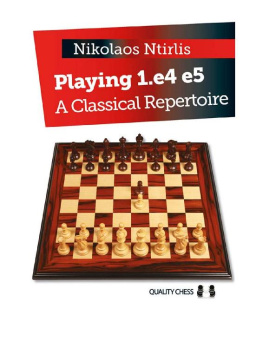

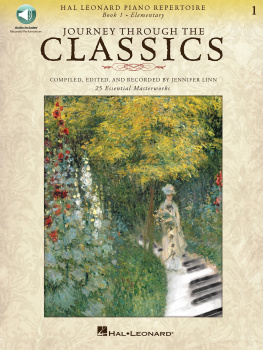
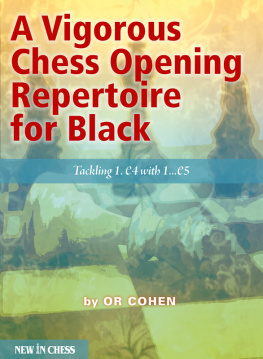
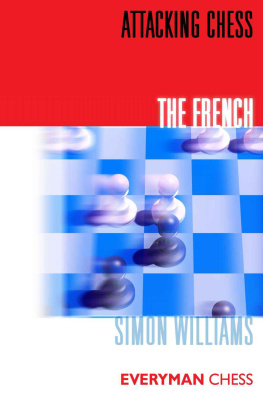
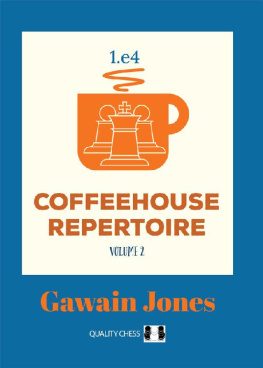

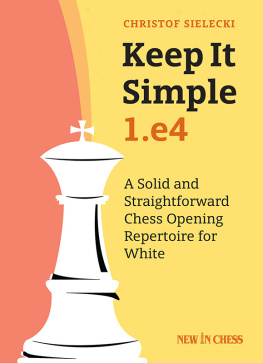
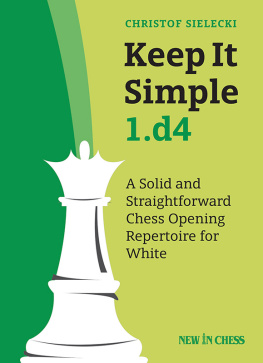
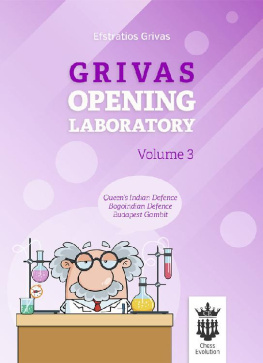
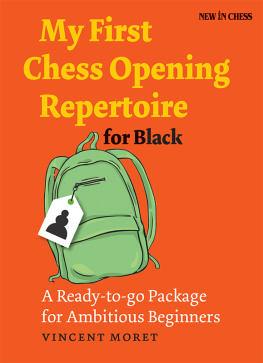
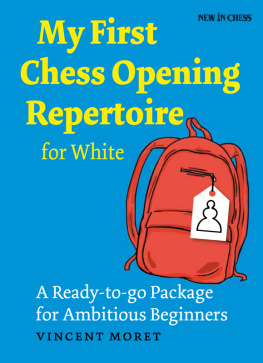
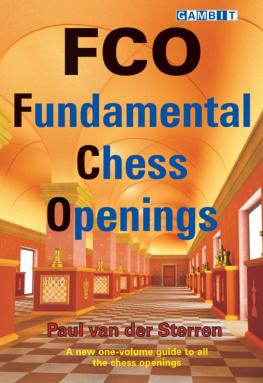
 Contents Title Page Key to Symbols used Foreword by Parimarjan Negi Bibliography Introduction Summary of Recommendations Open Games 1 Early Deviations and Gambits The Portuguese Opening The Nakamura Variation The Ponziani Opening The Gring Gambit The Centre Game The Kings Gambit 2 Bishops Opening and Vienna Game The Bishops Opening The Vienna Game 3 Four Knights Introduction The Halloween Gambit 4.a3 4.d3 4.h3 4.Be2 The Italian Four Knights The Glek System 4 Four Knights 4.d4 and 4.Bb5 The Belgrade Gambit The Scotch Four Knights The Spanish Four Knights 5 Scotch Game On the Way to the Main Line The Main Line 6 Two Knights 4.d4 and 4.d3 The Original Morphy Attack The Improved Morphy Attack The Modern Variation Introduction 4.d3 Introduction and 5.Nc3: Main Lines after 5.00 00 7 Two Knights with 4.Ng5 The Kieseritzky Variation 8.Bb5 8.Qf3 8.Bd3! The Modern Trend Spanish 8 Exchange Variations The Exchange Variation, 5.Nc3 f6 The Simple 5.d4 The Main Line The Delayed Exchange Variation 5.d4 The Central Attack 9 On the Road to the Main Line Spasskys 5.Nc3 The Worrall System Just Before the Main Lines 10 The Trendy d2-d3 5.d3 The Fashionable 6.d3 Anands concept with 8.a3! 11 Breyer 10.d3 and Sidelines after 10.d4 10.d3 Nbd7 11.Nbd2 Bb7 12.Nf1 Nc5 13.Bc2 Re8 14.Ng3 Bf8 Introduction to 10.d4 12 Breyer Alternatives to 13.Nf1 13.b4 Bf8 14.a4 Nb6 15.a5 Nbd7 16.Bb2 Rb8 Introduction to 13.a4 The Super-Critical 20.b4! 13 Breyer Main Lines 14.Bg5 14.Ng3 g6 15.Bg5 15.b3 The Sophisticated 18.Bg5 15.a4 Index of Main Games Variation Index
Contents Title Page Key to Symbols used Foreword by Parimarjan Negi Bibliography Introduction Summary of Recommendations Open Games 1 Early Deviations and Gambits The Portuguese Opening The Nakamura Variation The Ponziani Opening The Gring Gambit The Centre Game The Kings Gambit 2 Bishops Opening and Vienna Game The Bishops Opening The Vienna Game 3 Four Knights Introduction The Halloween Gambit 4.a3 4.d3 4.h3 4.Be2 The Italian Four Knights The Glek System 4 Four Knights 4.d4 and 4.Bb5 The Belgrade Gambit The Scotch Four Knights The Spanish Four Knights 5 Scotch Game On the Way to the Main Line The Main Line 6 Two Knights 4.d4 and 4.d3 The Original Morphy Attack The Improved Morphy Attack The Modern Variation Introduction 4.d3 Introduction and 5.Nc3: Main Lines after 5.00 00 7 Two Knights with 4.Ng5 The Kieseritzky Variation 8.Bb5 8.Qf3 8.Bd3! The Modern Trend Spanish 8 Exchange Variations The Exchange Variation, 5.Nc3 f6 The Simple 5.d4 The Main Line The Delayed Exchange Variation 5.d4 The Central Attack 9 On the Road to the Main Line Spasskys 5.Nc3 The Worrall System Just Before the Main Lines 10 The Trendy d2-d3 5.d3 The Fashionable 6.d3 Anands concept with 8.a3! 11 Breyer 10.d3 and Sidelines after 10.d4 10.d3 Nbd7 11.Nbd2 Bb7 12.Nf1 Nc5 13.Bc2 Re8 14.Ng3 Bf8 Introduction to 10.d4 12 Breyer Alternatives to 13.Nf1 13.b4 Bf8 14.a4 Nb6 15.a5 Nbd7 16.Bb2 Rb8 Introduction to 13.a4 The Super-Critical 20.b4! 13 Breyer Main Lines 14.Bg5 14.Ng3 g6 15.Bg5 15.b3 The Sophisticated 18.Bg5 15.a4 Index of Main Games Variation Index  A Classical RepertoirePlaying 1.e4 e5 By Nikolaos Ntirlis Quality Chess http://www.qualitychess.co.uk First edition 2016 by Quality Chess UK Ltd Copyright 2016 Nikolaos Ntirlis All rights reserved. No part of this publication may be reproduced, stored in a retrieval system or transmitted in any form or by any means, electronic, electrostatic, magnetic tape, photocopying, recording or otherwise, without prior permission of the publisher. Paperback ISBN 978-1-78483-014-4 Hardcover ISBN 978-1-78483-015-1 All sales or enquiries should be directed to Quality Chess UK Ltd, Suite 247, Central Chambers, 11 Bothwell Street, Glasgow G2 6LY, United Kingdom Phone +44 141 204 2073 e-mail: info@qualitychess.co.uk website: www.qualitychess.co.uk Distributed in North America by National Book Network Distributed in Rest of the World by Quality Chess UK Ltd through Sunrise Handicrafts, ul. Poligonowa 35A, 20-817 Lublin, Poland Typeset by Jacob Aagaard Proofreading by Colin McNab, Danny McGowan and John Shaw Edited by Andrew Greet Cover design by adamsondesign.com Cover Photo by Capture365.com Key to symbols used White is slightly better Black is slightly better White is better Black is better + White has a decisive advantage + Black has a decisive advantage = equality with compensation with counterplay with an initiative unclear ? a weak move ?? a blunder ! a good move !! an excellent move !? a move worth considering ?! a move of doubtful value only move # mate Acknowledgements Id like to express my gratitude to: Sabino, Sune, Sam, John, Elshan, Ioannis and Sotiris, for sending me important feedback on various lines of the book. Jacob and George, for promoting my work and for their general support.
A Classical RepertoirePlaying 1.e4 e5 By Nikolaos Ntirlis Quality Chess http://www.qualitychess.co.uk First edition 2016 by Quality Chess UK Ltd Copyright 2016 Nikolaos Ntirlis All rights reserved. No part of this publication may be reproduced, stored in a retrieval system or transmitted in any form or by any means, electronic, electrostatic, magnetic tape, photocopying, recording or otherwise, without prior permission of the publisher. Paperback ISBN 978-1-78483-014-4 Hardcover ISBN 978-1-78483-015-1 All sales or enquiries should be directed to Quality Chess UK Ltd, Suite 247, Central Chambers, 11 Bothwell Street, Glasgow G2 6LY, United Kingdom Phone +44 141 204 2073 e-mail: info@qualitychess.co.uk website: www.qualitychess.co.uk Distributed in North America by National Book Network Distributed in Rest of the World by Quality Chess UK Ltd through Sunrise Handicrafts, ul. Poligonowa 35A, 20-817 Lublin, Poland Typeset by Jacob Aagaard Proofreading by Colin McNab, Danny McGowan and John Shaw Edited by Andrew Greet Cover design by adamsondesign.com Cover Photo by Capture365.com Key to symbols used White is slightly better Black is slightly better White is better Black is better + White has a decisive advantage + Black has a decisive advantage = equality with compensation with counterplay with an initiative unclear ? a weak move ?? a blunder ! a good move !! an excellent move !? a move worth considering ?! a move of doubtful value only move # mate Acknowledgements Id like to express my gratitude to: Sabino, Sune, Sam, John, Elshan, Ioannis and Sotiris, for sending me important feedback on various lines of the book. Jacob and George, for promoting my work and for their general support.  Foreword by Parimarjan Negi These days, the art of chess analysis is completely different from that of playing the game.
Foreword by Parimarjan Negi These days, the art of chess analysis is completely different from that of playing the game.